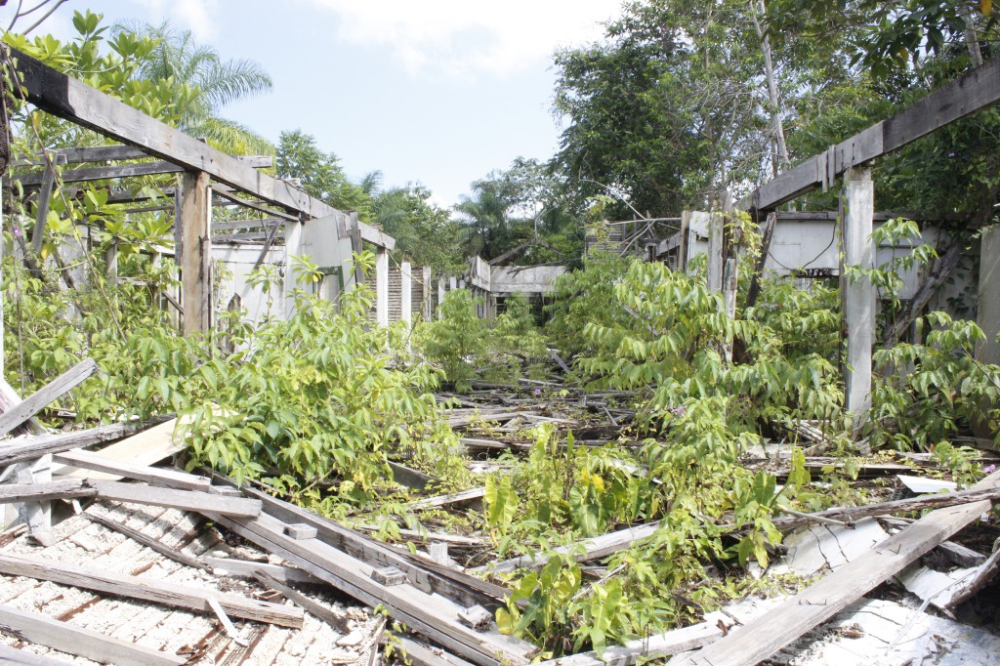The Amazon rainforest has long been a source of inspiration for novel solutions to modern problems, from biopharmaceuticals to sustainable ways of living. One of its most commercially coveted resources ignited a global rubber rush in the 1800s, one that came at enormous human cost.
By the 1920s, Brazil’s rubber trees had caught the eye of car manufacturer Henry Ford who had a bright idea: why pay the exorbitant costs of Asia’s growing rubber markets when he could simply buy a massive patch of the Amazon and build an industrial utopia that could produce all the rubber his cars’ tires needed? And so, Fordlândia was born.
Carved into the rainforest in the Brazilian state of Pará, the town’s ambition was to create an American ideal in the Amazon, complete with big buildings, a hospital, and an entertainment center. It would establish a promising new source of latex while also providing jobs, keeping Ford’s cars in precious rubber along the way. Reality, however, had other ideas.
Fordlândia was about twice the size of Delaware, sat along the Tapajós river, which is a major tributary to the Amazon. On higher ground, it avoided the worst of the wet season’s flooding, but it also meant ships carrying the materials needed to begin construction struggled to access it during the dry season. Materials arrived slowly, and tensions rose as the rigid schedules, restricted diet, and drinking bans didn’t go down well with the workers.
Thousands of them were hired to painstakingly clear millions of acres of land by hand as venomous snakes made their protests known. Eventually, the landscape yielded, and at last, Ford had his window in the forest of opportunity. He would build what nobody else had been able to: row upon row of rubber trees like the crops back home in Michigan.
However, as Andrew Fishman, president and co-founder of The Intercept Brasil, points out in Dom Phillip’s book How To Save The Amazon, nobody in the Amazon had ever tried this before with good reason. You see, Ford’s plans ignored what the Indigenous Peoples and Brazilians already knew: monocultures don’t thrive in the Amazon.
“Ford, confident in the superiority of his American gumption, values and technology, felt he was doing God’s work by conquering the forest and bringing ‘civilisation’ and economic progress to what he saw as the backwards peoples of the jungle,” wrote Fishman. “Except, the Amazon did not lack Ford’s brand of rubber plantation due to ignorance. Just the opposite. As the [locals] knew, pests and blights quickly spread between native rubber trees planted close together.”

The hospital was gutted of its contents and has fallen into ruin.
Without biodiversity to protect the rubber trees, the plantation was overwhelmed by blight and a devastating caterpillar infestation. Meanwhile, workers contended with disease, malnutrition, harsh working conditions, and bites from snakes and bats. One of the biggest human-made fires the rainforest has ever seen broke out as workers tried to clear the land, adding to the scourge on the environment that was Ford’s failed attempt to bring America to the Amazon.
Ford never visited his namesake city. Eventually, the entire experiment was written off by his grandson in 1945 at a loss equivalent to around $350 million today. The forest began reclaiming the town soon after, but Fordlândia didn’t disappear.
Though its population amounted to fewer than 100 residents for decades, today it’s home to around 2,000 to 3,000 people. Meanwhile, the derelict remnants of Ford’s dream linger on in the background, a crumbling reminder that the Amazon’s strength rests in its biodiversity.
Source Link: In 1927, Henry Ford Tried To Build A Town In The Amazon And Things Went Very, Very Badly